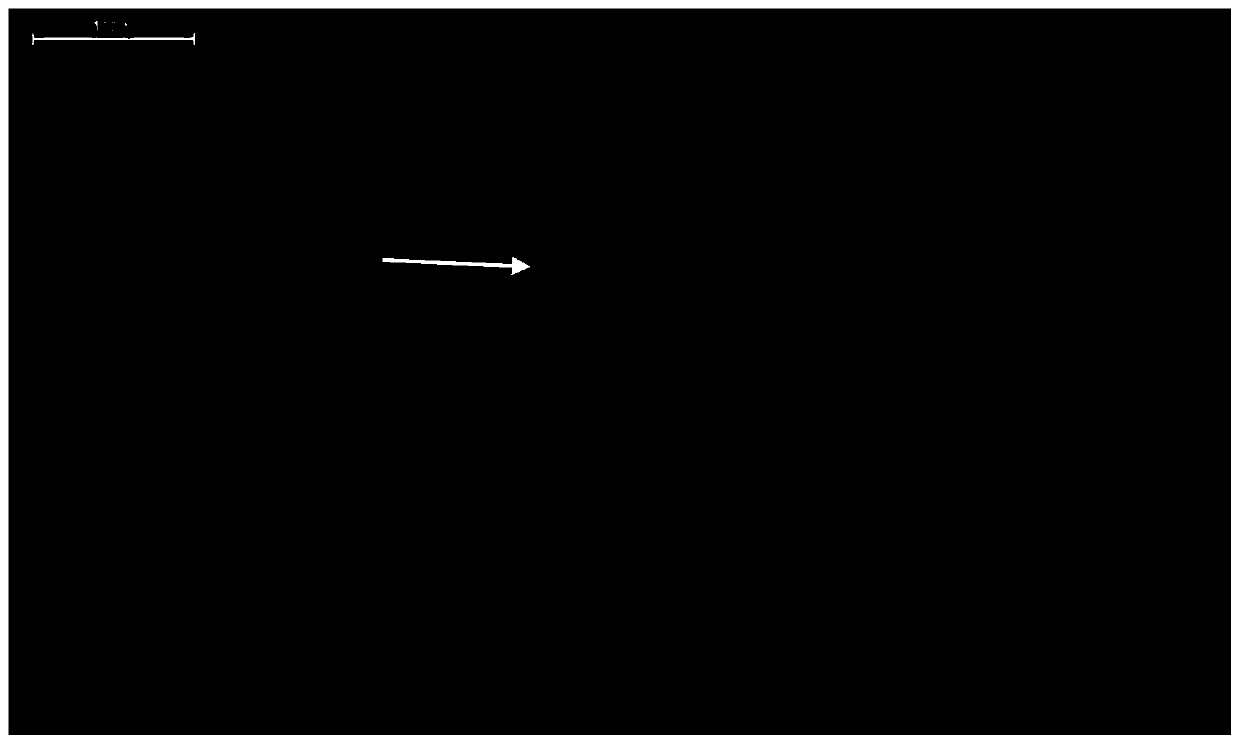Immunofluorescent method for detecting plant gibberellin
An immunofluorescence and gibberellin technology is applied in the field of immunofluorescence detection of plant gibberellins, which can solve the problems of high cost, expensive instruments, cumbersome operations, inability to locate gibberellins in situ, etc. simple effect
- Summary
- Abstract
- Description
- Claims
- Application Information
AI Technical Summary
Problems solved by technology
Method used
Image
Examples
Embodiment 1
[0033] An immunofluorescence method for detecting phytogibberellins, comprising the following steps:
[0034] S1. Dewaxing and rehydration: After the plant tissue is made into paraffin sections, put 1,3-xylene with a concentration of ≥99% in sequence for 10 minutes, 1,3-xylene with a concentration of ≥99% for 10 minutes, and a concentration of ≥99% for 10 minutes. 99% 1,3-xylene for 10 minutes, absolute ethanol I for 5 minutes, absolute ethanol II for 5 minutes, 95% ethanol for 5 minutes, 85% ethanol for 5 minutes, 75% ethanol for 5 minutes, and finally washed with distilled water to obtain dewaxed and rehydrated tissues slice;
[0035] S2. Antigen retrieval: the dewaxed and rehydrated tissue sections were placed in a mixture of 1.8 mM / L citric acid monohydrate and 0.2 mM / L trisodium citrate dihydrate at a pH of 6.0, and placed in Heat in a microwave oven on medium-high heat for 10 minutes, heat on medium-high heat for 5 minutes, take it out and cool it to room temperature na...
Embodiment 2
[0045] An immunofluorescence method for detecting phytogibberellins, comprising the following steps:
[0046] S1. Dewaxing and rehydration: After the plant tissue is made into paraffin sections, put 1,3-xylene with a concentration of ≥99% in sequence for 10 minutes, 1,3-xylene with a concentration of ≥99% for 10 minutes, and a concentration of ≥99% for 10 minutes. 99% 1,3-xylene for 10 minutes, absolute ethanol I for 5 minutes, absolute ethanol II for 5 minutes, 95% ethanol for 5 minutes, 85% ethanol for 5 minutes, 75% ethanol for 5 minutes, and finally washed with distilled water to obtain dewaxed and rehydrated tissues slice;
[0047] S2. Antigen retrieval: the dewaxed and rehydrated tissue sections were placed in a mixture of 1.8 mM / L citric acid monohydrate and 0.2 mM / L trisodium citrate dihydrate at a pH of 6.0, and placed in Heat in a microwave oven on medium-high heat for 8 minutes, then take it out and cool it to room temperature naturally, then place it in 0.05mM / L d...
Embodiment 3
[0057] An immunofluorescence method for detecting phytogibberellins, comprising the following steps:
[0058] S1. Dewaxing and rehydration: After the plant tissue is made into paraffin sections, put 1,3-xylene with a concentration of ≥99% in sequence for 10 minutes, 1,3-xylene with a concentration of ≥99% for 10 minutes, and a concentration of ≥99% for 10 minutes. 99% 1,3-xylene for 10 minutes, absolute ethanol I for 5 minutes, absolute ethanol II for 5 minutes, 95% ethanol for 5 minutes, 85% ethanol for 5 minutes, 75% ethanol for 5 minutes, and finally washed with distilled water to obtain dewaxed and rehydrated tissues slice;
[0059] S2. Antigen retrieval: the dewaxed and rehydrated tissue sections were placed in a mixture of 1.8 mM / L citric acid monohydrate and 0.2 mM / L trisodium citrate dihydrate at a pH of 6.0, and placed in Heat in a microwave oven on medium-high heat for 9 minutes, heat on medium-high heat for 4 minutes, take it out and cool it to room temperature nat...
PUM
 Login to View More
Login to View More Abstract
Description
Claims
Application Information
 Login to View More
Login to View More - R&D
- Intellectual Property
- Life Sciences
- Materials
- Tech Scout
- Unparalleled Data Quality
- Higher Quality Content
- 60% Fewer Hallucinations
Browse by: Latest US Patents, China's latest patents, Technical Efficacy Thesaurus, Application Domain, Technology Topic, Popular Technical Reports.
© 2025 PatSnap. All rights reserved.Legal|Privacy policy|Modern Slavery Act Transparency Statement|Sitemap|About US| Contact US: help@patsnap.com



